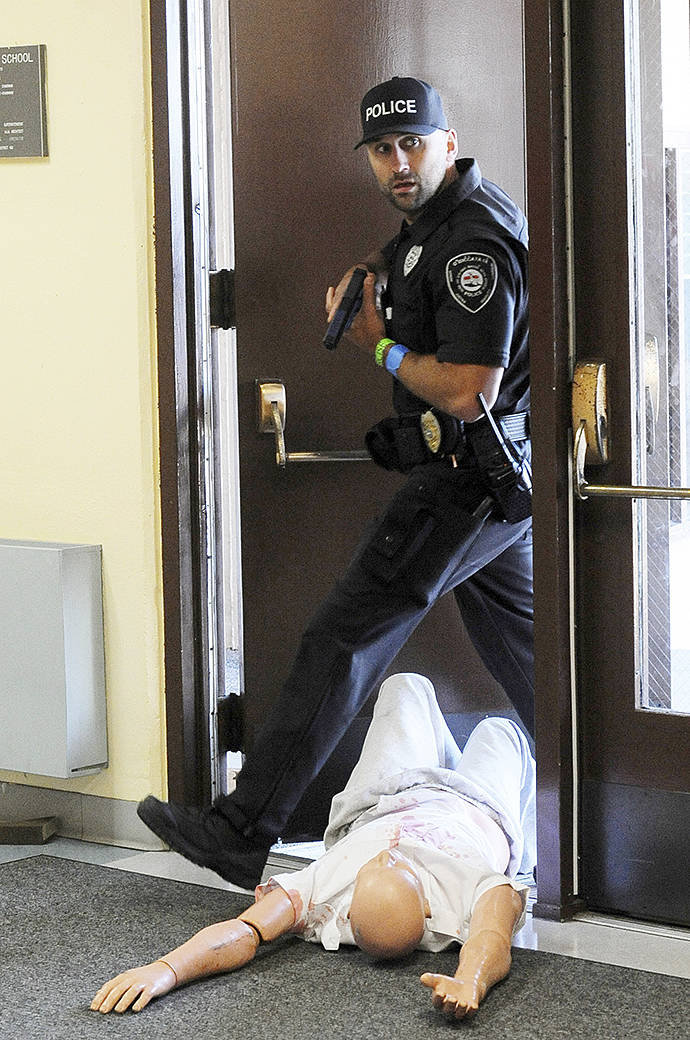A Mass Casualty Actual Shooter Training Drill was held Friday, Aug. 10, at the Clallam Bay School in Clallam Bay. The training drill lasted about four hours, starting at noon and lasting until 4:30 p.m. Preparations begin at 7:30 a.m.
A number of Law Enforcement and fire/emergency services personnel were involved in the training drill. The training was not open to the public and school operations were closed.
This drill was a product of an Interagency First Responder Group that included law enforcement instructors, Clallam Bay Corrections Center Personnel, Firefighters/medics from Clallam Bay, Joyce, and Forks Fire Districts, School personnel from the different school districts, Olympic Medical Center, Clallam County Emergency Services, CISM Teams, Olympic Ambulance, Forks Hospital/ Ambulance, Clallam County Road Department, U.S. Coast Guard, Ares Communications, Peninsula Communications, Airlift Northwest, Elwha Police Department and the Washington State Department of Transportation.
The Law Enforcement agencies that were involved in the Interagency Group included the Sequim Police Department, Port Angeles Police Department, LaPush Tribal Police Department, Neah Bay Public Safety, Border Patrol, Elwha Tribal Police Department, Washington State Patrol, Olympic National Park, Forks Police Department and the Clallam County Sheriff’s Department.
The Interagency Group, led by the Clallam County Sheriff’s Department, have been meeting and working on organizing and facilitating a mass casualty training drills for several month now. The training drills are in accordance with statewide mandates for schools to conduct mass casualty drills given the current events occurring around the world and the nation.
The drill involved role players portraying casualties and witnesses. The drill gave first responders, school personnel, and hospital/medical personnel some actual hands on practice and training together should a real mass casualty event occur. Law Enforcement and Fire/ EMS have been conducting Active Shooter Mass Casualty Response training together and within their respective departments for a number of years and the training drill was an expansion of that training. This drill follows a successful interagency protocol that is being used around the nation.



